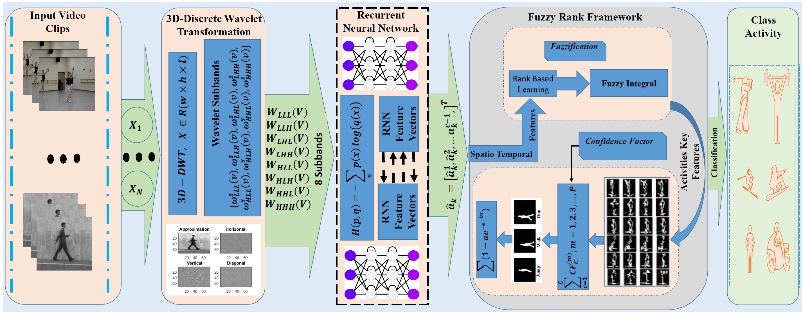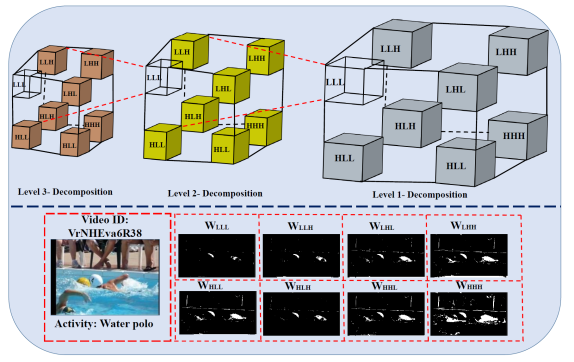The Big Data Department makes progress in image data processing research
Despite massive research in deep learning, the Human Activity Recognition (HAR) domain still suffers from key challenges in terms of accurate classification and detection. The core idea behind recognizing activities accurately is to assist Internet of Things (IoT) enabled smart surveillance systems. Fayaz A. Dharejo, a foreign PhD student in the Big Data Department, proposed a Fuzzy-based framework for temporal activity recognition in IoT applications support by Prof. ZHOU Yuanchun and other advisors, and the results were published in the international journal IEEE Transactions on Fuzzy Systems.
This work is based on the joint use of discrete wavelet transform (DWT) and recurrent neural networks (RNN) to classify and detect human activities accurately.
Recent approaches on HAR exploit 3D CNNs to extract spatial information, which adds a computational burden. The feature extraction process is an integral part of HAR; in our case, features are extracted using 3D-DWT instead of 3D CNNs, performed in three step of 1D-DWT to reflect the Spatio-temporal features of human action. Given these features, the RNN generates an output label for each video clip that is responsible for satisfying the long-term temporal consistency among close predictions in the output sequence. It is worth noting that the extraction of features by 3D-DWT essentially recovers the multiple angles of the activity. Many HAR techniques distinguish activities based on the posture of an image frame rather than learning the transition relationships between postures in the temporal sequence, resulting in accuracy degradation. To address this problem, we designed a novel ranking-based fuzzy approach that segregates activities precisely by ranking the probabilities based on confidence scores, with an average mAP of 0.8012 mAP on the ActivityNet dataset and outperforms baseline counterparts and other state-of-the-art approaches on benchmark datasets.

Figure 1.A Fuzzy-based framework for identifying temporal activities in IoT applications - FuzzyAct Framework

Figure 2. Decomposition algorithm of the 3D-DWT filter
For details, please contact DONG Hao(donghao@cnic.cn)
